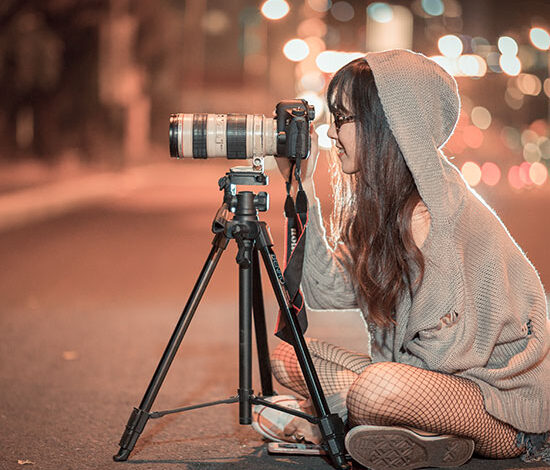Through the Lens: Unveiling the Artistry of Photography

The Evolution of Photography as an Art Form
Photography has come a long way since its inception in the early 19th century. What started as a scientific experiment to capture permanent images has evolved into a respected art form that intertwines technology and creativity. In the beginning, photographs were seen as simple documentary records. But over time, photographers began exploring the artistic potential of the medium. They started using photography to communicate ideas, elicit emotions, and showcase unique perspectives on their subjects. Let’s explore some key developments that paved photography’s path to being recognised as a fine art.
Early Photographic Processes and Aesthetics
The earliest photographic process, the daguerreotype, invented in 1839, produced images on silver-plated copper sheets. The plates were one-of-a-kind, mirror-like in surface and rich in detail. However, the lengthy exposure time required for these images gave them a poised, frozen look. In the 1850s, the wet plate collodion process reduced exposure time significantly, enabling photographers to capture livelier shots. During this time, pictorialism emerged as the first significant photographic movement, emphasising the beauty of subject and tone over documentary accuracy. Soft focus, special filters, composite images, and darkroom manipulation made photos look like paintings or etchings. Prominent Pictorialists like Julia Margaret Cameron and Oscar Gustave Rejlander firmly established photography as an artistic medium.
Early 20th Century Modernism and Avant-Garde
In the early 20th century, photography took a decidedly modernist and avant-garde turn. Photographers embraced abstraction, unusual vantage points, bold graphic elements, experimental processes and darkroom techniques. The striking, high-contrast images by Man Ray epitomised this modernist aesthetic by turning ordinary objects into provocative abstract compositions. Alfred Stieglitz, Ansel Adams, and Edward Weston forged new paths by capturing the sublime beauty of nature and urban landscapes in new radical perspectives.
Photojournalism also emerged, establishing photography’s role in documenting world events. Pioneering photojournalists like Henri Cartier-Bresson and Dorothea Lange used the immediacy of photography to tell compelling stories through a new visual language.
Mid to Late 20th Century – Diversification and Postmodernism
From the mid-20th century onwards, photography diversified into an incredibly pluralistic medium. The advent of colour photography and accessible handheld cameras gave photographers unprecedented creative freedom. Image manipulation through digital processing also opened up radical new directions. Conceptual photographers like Cindy Sherman employed meticulous staging and prosthetics to construct evocative fictional tableaus, critiquing media stereotypes.
The postmodern scrapbook aesthetic of Robert Frank’s seminal 1958 book The Americans became hugely influential. Photodocumentarians like Mary Ellen Mark intimately captured diverse subcultures and communities. Photography has become so diversified in the contemporary age that it is hard to pin down. However, this eclecticism only serves to push the creative boundaries of the medium as a cutting-edge art form.
Photography as Self-Expression and Storytelling
Beyond documenting reality, photography has become a powerful tool of self-expression and narrative. Photographers can share their distinctive eyes on the world through creative approaches and unique perspectives. They can capture fleeting moments that reveal the profound within the ordinary. Or use imagery symbolically to articulate ineffable emotions and ideas. When done skillfully, photos can suggest entire stories through subtle visual cues, compelling onlookers to unpack layers of meaning.
Photography allows for remarkable intimacy, too. Portraiture enables photographers to capture the inner lives of subjects – their moods, flaws and humanity. Social documentary photography can give voices to marginalised communities by depicting their lived realities. The camera thus becomes an instrument of empathy. But photography can also turn the lens inwards – photographers can use self-portraits to reflect on identity, desires, and insecurities. Images allow us to freeze time, preserve memories, and ingress lived experiences. Every photograph contains a moment of phenomenological and symbolic resonance.
The Universal Language of Photography
Ultimately, Faithful photography speaks a universal visual language that can be appreciated across cultures. Unlike text or speech, the imagery of photos directly taps into our minds. A single photograph can trigger complex emotions and collectively shared associations. Iconic photographs permanently etch pivotal public events – the sailor kissing a nurse on V-Day, the napalmed Vietnamese girl, and the lone man facing the tanks in Tiananmen Square.
But even mundane photos can be evocative by reminding us of our most treasured personal memories – looking at old childhood photos, snapshots of lost loved ones, that perfect vacation photo. This demonstrates photography’s unique ability to traverse public and private realms, preserving collective and individual histories.
Photography reflects our shared human experiences of joy, grief, love, fear, and hope, regardless of where we are from or who we are. Through cultured eyes, mindful eyes, and our own eyes, photography invites us to re-examine our world anew each time.
So keep your eyes open and start looking through the lens. You might be surprised by the moments of meaning and connection you discover in your photographs.

